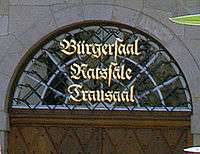Definify.com
Webster 1913 Edition
S
S
Webster 1828 Edition
S
S
, the nineteenth letter of the English Alphabet, is a sibilant articulation, and numbered among the semi-vowels. It represents the hissing made by driving the breath between the end of the tongue and the roof of the mouth, just above the upper teeth. It has two uses; one to express a mere hissing, as in Sabbath, sack, sin, this, thus; the other a vocal hissing, precisely like that of z, as in muse, wise, pronounced muze, wize. It generally has its hissing sound at the beginning of all proper English words, but in the middle and end of words, its sound is to be known only by usage. In a few words it is silent, as in isle and viscount.Definition 2025
S
S
 | ||||||
| ||||||
|---|---|---|---|---|---|---|
Translingual
Letter
S upper case
- The nineteenth letter of the basic modern Latin alphabet.
See also
- (Latin script): Aa Bb Cc Dd Ee Ff Gg Hh Ii Jj Kk Ll Mm Nn Oo Pp Qq Rr Sſs Tt Uu Vv Ww Xx Yy Zz
- (Variations of letter S): Śś Ṥṥ Ŝŝ Šš Ṧṧ Ṡṡẛ Şş Ṣṣ Ṩṩ Șș S̩s̩ ᵴ ᶊ ʂ ȿ ꜱ Ss ſ ẞß stſt
Symbol
S
- (chemistry) symbol for sulfur / sulphur
- (metrology) symbol for siemens, a measure of electrical conductance.
- (metrology) symbol for spat (obsolete astronomical unit of distance).
- (metrology) symbol for svedberg (unit of sedimentation rate in ultracentrifugation).
- (biochemistry) IUPAC 1-letter abbreviation for serine
- (geology) symbol for storativity
- (mathematics, topology) sphere
- (mathematics, computer science) The S ("substitution") combinator, defined as Sxyz = xz(yz), used in SKI calculus
See also
Other representations of S:
|
- Letter styles
-

Capital and lowercase versions of S, in normal and italic type
-

Uppercase and lowercase S in Fraktur
English
Pronunciation
- (letter) IPA(key): /ɛs/
- (phoneme) IPA(key): /s/, /z/, /ʒ/
Letter
S (upper case, lower case s, plural Ss or S's)
See also
- (Latin script letters) letter; Aa, Bb, Cc, Dd, Ee, Ff, Gg, Hh, Ii, Jj, Kk, Ll, Mm, Nn, Oo, Pp, Qq, Rr, Ss, Tt, Uu, Vv, Ww, Xx, Yy, Zz
Number
S (upper case, lower case s)
- The ordinal number nineteenth, derived from this letter of the English alphabet, called ess and written in the Latin script.
Etymology 2
Noun
S (plural Ss)
- American Library Association. Abbreviation for sextodecimo, a book size, 15-17.5 cm in height.
- south
- Abbreviation of season. (group of episodes of a series)
- I watched S01 through 03. I have yet to watch the S04.
- The pilot episode is S01E01.
Azeri
Letter
S upper case (lower case s)
See also
- (Latin script letters) hərf; Aa, Bb, Cc, Çç, Dd, Ee, Əə, Ff, Gg, Ğğ, Hh, Xx, Iı, İi, Jj, Kk, Qq, Ll, Mm, Nn, Oo, Öö, Pp, Rr, Ss, Şş, Tt, Uu, Üü, Vv, Yy, Zz
Dutch
Pronunciation
- (letter name): IPA(key): /ɛs/
Letter
S (upper case, lower case s)
See also
- (Latin script letters) letter; Aa, Bb, Cc, Dd, Ee, Ff, Gg, Hh, Ii, Jj, Kk, Ll, Mm, Nn, Oo, Pp, Qq, Rr, Ss, Tt, Uu, Vv, Ww, Xx, Yy, Zz
Esperanto
Letter
S (upper case, lower case s)
See also
- (Latin script letters) litero; Aa, Bb, Cc, Ĉĉ, Dd, Ee, Ff, Gg, Ĝĝ, Hh, Ĥĥ, Ii, Jj, Ĵĵ, Kk, Ll, Mm, Nn, Oo, Pp, Rr, Ss, Ŝŝ, Tt, Uu, Ŭŭ, Vv, Zz
Abbreviation
S
- Abbreviation of sudo (“south”).
- (text messaging) Abbreviation of ŝi (“she”).
Alternative forms
- (she): Ŝ
Finnish
Letter
S (upper case, lower case s)
See also
- (Latin script letters) letter; Aa, Bb, Cc, Dd, Ee, Ff, Gg, Hh, Ii, Jj, Kk, Ll, Mm, Nn, Oo, Pp, Qq, Rr, Ss, Šš, Tt, Uu, Vv, Ww, Xx, Yy, Zz, Žž, Åå, Ää, Öö
French
Pronunciation
- (letter) IPA(key): /ɛs/
- Rhymes: -ɛs
Abbreviation
S
Letter
S (upper case, lower case s)
See also
- Template:list:Latin script letters/fr
German
Pronunciation
- IPA(key): /ʔɛs/
- Homophone: es
Letter
S (upper case, lower case ſ)
Abbreviation
S
German Sign Language
Etymology
Related to the French Sign Language sign for "S".
Production
This one-handed GSL sign is produced as follows:
- Posture the dominant hand in the “S” shape.
Letter

- the letter S
Ido
Pronunciation
- IPA(key): /s/
Letter
S (lower case s)
See also
- (Latin script letters) litero; Aa, Bb, Cc, Dd, Ee, Ff, Gg, Hh, Ii, Jj, Kk, Ll, Mm, Nn, Oo, Pp, Qq, Rr, Ss, Tt, Uu, Vv, Ww, Xx, Yy, Zz
Italian
Pronunciation
- (name of letter) IPA(key): /ˈɛsse/
- (phoneme) IPA(key): /s/, /z/
- (phoneme, when followed by a voiceless consonant) IPA(key): /s/
- (phoneme, when followed by a voiced consonant) IPA(key): /z/
Letter
S m, f (invariable, lower case s)
See also
- (Latin script letters) lettera; Aa, Bb, Cc, Dd, Ee, Ff, Gg, Hh, Ii, (Jj), (Kk), Ll, Mm, Nn, Oo, Pp, Qq, Rr, Ss, Tt, Uu, Vv, (Ww), (Xx), (Yy), Zz
-
 Italian alphabet on Wikipedia.Wikipedia
Italian alphabet on Wikipedia.Wikipedia
Latvian
Etymology
Proposed in 1908 as part of the new Latvian spelling by the scientific commission headed by K. Mīlenbahs, which was accepted and began to be taught in schools in 1909. Prior to that, Latvian had been written in German Fraktur, and sporadically in Cyrillic.
Pronunciation
- IPA(key): [s]
Letter

S (upper case, lower case s)
See also
- Letters of the Latvian alphabet:
Malay
Pronunciation
Letter
S
See also
- (Latin script letters) Aa, Bb, Cc, Dd, Ee, Ff, Gg, Hh, Ii, Jj, Kk, Ll, Mm, Nn, Oo, Pp, Qq, Rr, Ss, Tt, Uu, Vv, Ww, Xx, Yy, Zz
Portuguese
Letter
S (upper case, lower case s)
See also
- (Latin script letters) letra; Aa, Bb, Cc, Dd, Ee, Ff, Gg, Hh, Ii, Jj, Kk, Ll, Mm, Nn, Oo, Pp, Qq, Rr, Ss, Tt, Uu, Vv, Ww, Xx, Yy, Zz
Romanian
Pronunciation
Letter
S (upper case, lower case s)
See also
- (Latin script letters) Aa, Ăă, Ââ, Bb, Cc, Dd, Ee, Ff, Gg, Hh, Ii, Îî, Jj, Kk, Ll, Mm, Nn, Oo, Pp, Qq, Rr, Ss, Șș, Tt, Țț, Uu, Vv, Ww, Xx, Yy, Zz
Saanich
Pronunciation
- IPA(key): /s/
Letter
S
See also
- (Latin script letters) A, Á, Ⱥ, B, C, Ć, Ȼ, D, E, H, I, Í, J, K, Ꝁ/K̵/₭, Ḵ, Ḱ, L, Ƚ, M, N, Ṉ, O, P, Q, S, Ś, T, Ⱦ, Ṯ, Ŧ, U, W, W̲, X, X̲, Y, Z, s
Skolt Sami
Pronunciation
- (phoneme) IPA(key): /s/
Letter
S (lower case s)
See also
- (Latin script letters) bukva; Aa, Ââ, Bb, Cc, Čč, Ʒʒ, Ǯǯ, Dd, Đđ, Ee, Ff, Gg, Ǧǧ, Ǥǥ, Hh, Ii, Jj, Kk, Ǩǩ, Ll, Mm, Nn, Ŋŋ, Oo, Õõ, Pp, Rr, Ss, Šš, Tt, Uu, Vv, Zz, Žž, Åå, Ää, ˊ
Slovene
Letter
S (upper case, lower case s)
See also
- (Latin script letters) Aa, Bb, Cc, Čč, Dd, Ee, Ff, Gg, Hh, Ii, Jj, Kk, Ll, Mm, Nn, Oo, Pp, Rr, Ss, Šš, Tt, Uu, Vv, Zz, Žž
Somali
Pronunciation
Letter
S upper case (lower case s)
Usage notes
- The ninth letter of the Somali alphabet, which follows Arabic abjad order. It is preceded by R and followed by SH.
See also
- (Latin script letters) ', Bb, Tt, Jj, Xx, Khkh, Dd, Rr, Ss, Shsh, Dhdh, Cc, Gg, Ff, Qq, Kk, Ll, Mm, Nn, Ww, Hh, Yy, Aa, Ee, Ii, Oo, Uu
Turkish
Letter
S (upper case, lower case s)
See also
- (Latin script letters) harf; Aa, Bb, Cc, Çç, Dd, Ee, Ff, Gg, Ğğ, Hh, Iı, İi, Jj, Kk, Ll, Mm, Nn, Oo, Öö, Pp, Rr, Ss, Şş, Tt, Uu, Üü, Vv, Yy, Zz
Vietnamese
Pronunciation
- (Hà Nội) IPA(key): [ʔɛʔt̚˧ˀ˦/, /ʔɛʔt̚˧ˀ˦ s̪i˨˩/, /s̪əːɰ˨˩/, /s̪əːɰ˨˩ nɐŋ˧ˀ˨ʔ]
- (Huế) IPA(key): [ʔɛʔt̚˦˥/, /ʔɛʔt̚˦˥ s̪ɪj˧˧/, /ʂəːɰ˧˧/, /ʂəːɰ˧˧ nɐŋ˨ˀ˨ʔ]
- (Hồ Chí Minh City) IPA(key): [ʔɛʔk̚˦ˀ˥/, /ʔɛʔk̚˦ˀ˥ s̪ɪj˨˩/, /ʂəːɰ˨˩/, /ʂəːɰ˨˩ nɐŋ˨ˀ˧ʔ]
- Phonetic: ét, ét xì, sờ, sờ nặng
Letter
S (upper case, lower case s)
- The twenty-third letter of the Vietnamese alphabet, called ét, ét-xì, sờ or sờ nặng and written in the Latin script.
See also
ſ
ſ
| ||||||
|---|---|---|---|---|---|---|
Translingual
Letter
ſ lower case
- (obsolete or archaic) The long s, a form of the letter ess (S).
- Examples of use in English:
- 1785, Vicesimus Knox, Liberal Education: Or, a Practical Treatiſe on the Methods of Acquiring Uſeful and Polite Learning, vol. II, pp. 1 & 3, section XXXI: On the regulation of puerile diverſions:
- Many fanciful methods have been invented by thoſe who wiſhed to render puerile ſports conducive to improvement. I never found that they were ſucceſsful.
- I muſt own myſelf an advocate for puerile liberty*, during the alloted hours of relaxation. Boys have much reſtraint and confinement in the time of ſtudy.
- Thoſe of the effeminate kind ſuperinduce effeminacy; weakneſs of mind, no leſs than imbecility of body. Something ſimilar happens in puerile diverſions. The boy who has been kept in leading-ſtrings too long, and reſtrained from hardy ſports by the fondneſs of his mother, will ſcarcely ever become a man; or poſſeſs that becoming ſpirit which can enable him to act his part with propriety.
- 1796, John Hatsell, Precedents of Proceedings in the House of Commons: With Observations, page 102:
- 75. On the 11th of May, 1759, the Lords amend a turnpike road Bill, by inſerting a clauſe, “That no gate ſhall be erected within a mile of Enſham Ferry”. The conſideration of this amendment is reſolved, nemine contradicente, to be put off for a month.
- 1785, Vicesimus Knox, Liberal Education: Or, a Practical Treatiſe on the Methods of Acquiring Uſeful and Polite Learning, vol. II, pp. 1 & 3, section XXXI: On the regulation of puerile diverſions:
- Examples of use in English:
Derived terms
Related terms
See also
- (Latin script letters) letter; Aa, Bb, Cc, Dd, Ee, Ff, Gg, Hh, Ii, Jj, Kk, Ll, Mm, Nn, Oo, Pp, Qq, Rr, Ss, Tt, Uu, Vv, Ww, Xx, Yy, Zz
English
Letter
ſ (lower case, upper case S, plural ſ's)
- (archaic) long s The nineteenth letter of the English alphabet, called long s, medial s or descending s and written in the Latin script.
Usage notes
The long, medial, or descending s, as distinct from the short or terminal s. In Roman script, the long S was used everywhere except at the end of words, where the short S was used, and frequently in what is now the digraph <ss>, which was often written <ſs> rather than <ſſ>. The distinction occurred only in minuscule (lowercase); a single majuscule (uppercase) form, S, was used regardless of word-position. In Fraktur script, the long S is used at the beginning of a word as well, as long as the word is not capitalized.
Middle French
Letter
ſ
- typographical variant of s, typically used for all instances except a final -s


